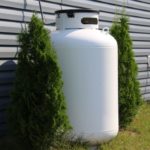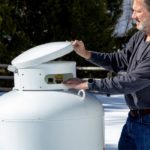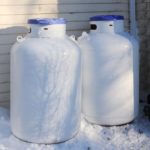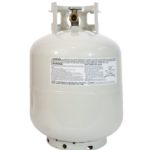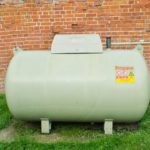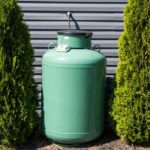If you’ve used propane to power a generator, light up a barbecue grill, or heat water and home space, then you must have had your tank refilled and transported in a personal vehicle at one point. But are you doing it the right way? And more importantly, are you transporting the tank in a safe manner?
Transporting a propane tank on its side is extremely dangerous because it submerges the relief valve in liquid propane. Plus you are jostling the tank around a lot while moving it around. Travel with the tank upright, using a blanket or other object to stabilize it and prevent it shifting around.
It’s important to know all the best safety practices for transporting propane. Let’s look at the steps you need to take for their safe transportation and storage, so you have all the information you need for the next time you need a propane refill.
Can Propane Tanks Be Transported Laying Down on Their Side?
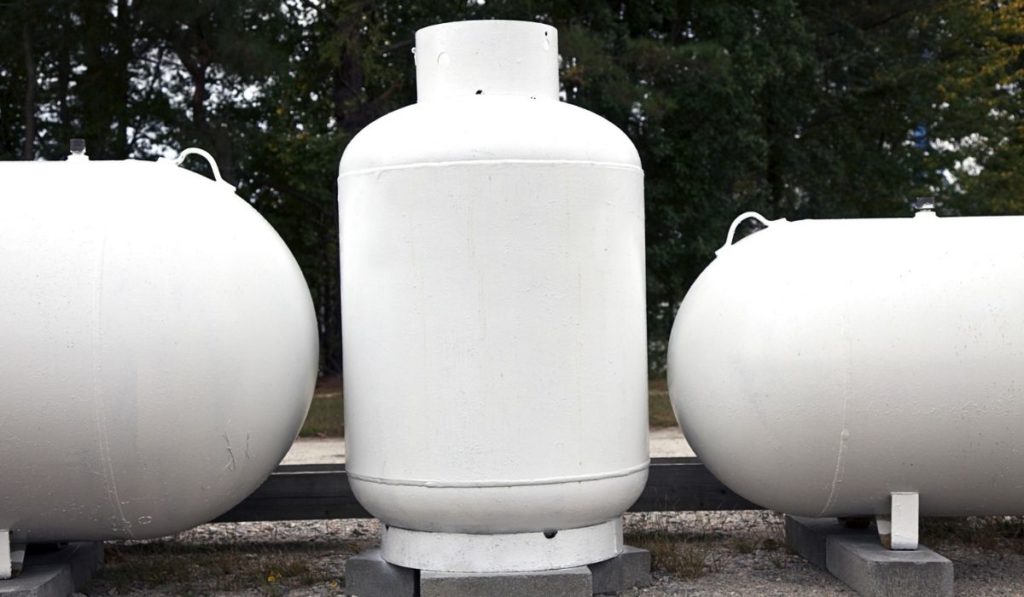
You shouldn’t lay a propane tank on its side unless it’s specifically instructed to do so. These tanks have a maximum fill limit of 80% to allow the gas to expand with an increase in temperature. The gas in the remaining 20% feeds your barbecue grill and other propane appliances.
If you lay the propane tank on its side and it starts to leak, the escaped liquid propane will expand 270 times more than the gas. Although having a leaky upright propane tank is dangerous as well, the damage from the escaped gas will be considerably less.
How to Safely Transport Propane Tanks
You must not transport more than four propane tanks in an SUV or sedan together. Each tank should contain less than 45 pounds of propane, and the combined weight of all the cylinders should not be more than 90 pounds.
Make sure you secure all tanks in the upright, vertical position during transportation.
The best and safest way to transport a propane tank is with a sturdy propane tank stabilizer and holder. These holders secure the tank by locking it into the vehicle’s foot ring, ensuring that it does not topple or roll over.
If you don’t want to purchase a holder, you can use a sturdy milk crate to keep the tank in an upright, vertical position. However, make sure you additionally secure it with a twine, rope, or a ratchet strap. It’s better to transport propane tanks in a vehicle with good anchor points as well.
You can transport 1000 pounds of propane in an open trailer or pickup truck. If you’re transporting 100-pound cylinders, make sure you ask someone to help you with the loading and unloading. Remember to never transport a 100-pound propane cylinder in an SUV or sedan or on its side.
Once you’ve loaded the propane tank into the back of your vehicle, locate the anchor points. Use rope, twine, or other tie-downs to firmly secure the tank at the top, at the base, and near the foot ring, making sure that it’s in a vertical, upright position.
Important Transportation Tips
- Secure the propane tank in an upright position.
- Don’t smoke while transporting tanks.
- Make sure you transport less than 90 pounds of total propane in an enclosed vehicle.
- Don’t transport more than four tanks in an enclosed vehicle.
- Each cylinder should contain less than 45 pounds of propane during transportation.
- Never leave a propane tank inside your vehicle.
- You can transport 1000 pounds of propane in a pickup, making the vehicle ideal for transporting large tanks.
Propane Tank Storage Safety Tips
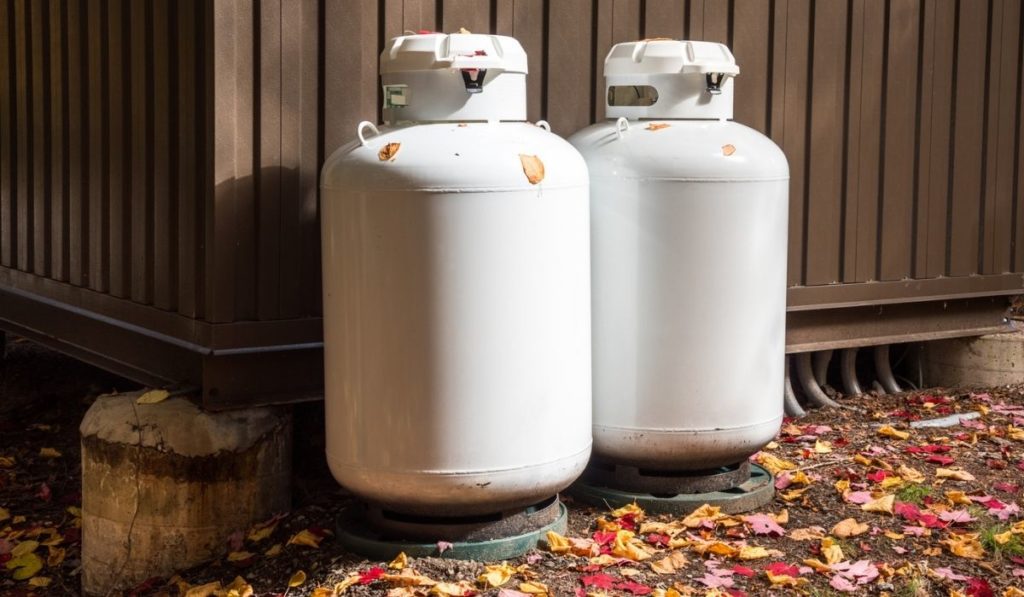
Proper propane storage can help ensure the safety of you and your family all year round. Let’s take a look at a few important tips.
Outdoor propane storage
While it’s perfectly safe to store propane tanks outside, it’s better to pick a spot that’s far away from your house. Freezing temperatures are not a problem for the fuel, so you can easily store them outside in the winters. In fact, you can even leave the tanks uncovered during the colder weather.
Make sure you keep the tank on a solid, stable surface, such as a slab of concrete or a piece of wood.
It’s easy to store propane tanks in the summer as well. In warmer weather, you can still keep them outside on a level, sturdy surface. However, make sure you keep the tanks in a shaded area so that their temperature does not exceed 120oF.
Indoor propane storage
It’s safe and convenient to store propane tanks inside, but only with the right setup. You must never store a propane tank in your living space or in any other area that’s attached to your house.
For indoor storage, it’s advised to keep the propane tank in your garage or detached shed. These structures offer excellent shade from direct sunlight and provide a well-ventilated space for the tank in both cold and warm weather.
Keep the tank on level ground in an upright position, and make sure that there are not any electrical tools or flammable materials nearby.
Key Storage Tips
Even if you don’t have a full propane tank, it’s important to take these precautions so you can use your propane tank safely and properly.
- Don’t store your propane tank in temperatures above 120oF.
- Avoid keeping the tank in direct sunlight.
- Make sure that you’ve turned off the gas valve before storing the tank.
- Never store the tank inside your house.
- Keep the tank in temperatures above -40oF during winters.
- Never store the tank upside down or on its side.

